An exciting new edition of the award-winning digital science programme, created by experts.
Everything that you need to teach outstanding science
Simple to implement across your school

An exciting new edition of the award-winning digital science programme, created by experts.
Everything that you need to teach outstanding science
Simple to implement across your school
Snap Science is an award-winning digital programme that provides everything you need to teach outstanding science and is simple to implement across your school.
The programme is shaped by an informed understanding of the purpose and value of primary science, aiming for every child to engage with a coherent progression of the scientific skills and concepts specified in the National Curriculum.
Snap Science:
. covers EYFS to Year 6
. contains a coherent and connected curriculum that is broken down into clear steps, with a focus on acquiring and applying essential knowledge and skills
. has a clearly mapped progression to ensure that conceptual and disciplinary knowledge build through the primary years
. is explicit about what children need to know and remember at each stage to ensure secure progression in their science learning
. includes clear, editable lesson plans that allow you to deliver content effectively tailored to the needs of your class
. is packed with practical activities, using a range of high-quality resources to ensure every lesson is rich, lively, and engaging
Snap Science, 2nd Edition is the UK’s No 1 science programme – now fully updated and better than ever!
”I’m really thrilled for what it has done right the way across the school.”
Alison Richards, Head Teacher, Hertingfordbury Cowper Primary School



ASSOCIATE PROFESSOR, BA (HONS), PGCE, MED, CSCITEACH
Jane has taught in primary schools in Hertfordshire and London. She is the director of the Primary Science Quality Mark, based at the University of Hertfordshire, is immediate past chair of the Associate of Science Education, and has been a consultant to the DfE, BBC, EEF, Wellcome Trust, Learned Societies and industry on primary science assessment and curriculum.
Jane’s team of Snap Science 2nd edition authors, Nicola Beverley, Naomi Hiscock, Liz Lawrence, Bryony Turford, Claire Seeley, David Allen, Jules Pottle and Dr Alex Sinclair are all highly experienced teachers, lecturers, curriculum designers, consultants and authors who are well known and respected in the primary science education sector.

CURRICULUM
IN A MANAGEABLE NUMBER OF LESSONS –easier timetabling with 6 modules per year planned so that the science is taught regularly and logically, with each National Curriculum statement broken into a series of steps.
Your subscription provides access to a wealth of digital resources including:
• editable lesson plans • slideshows • videos • resource sheets • tailored animations • interactive activities
Comprehensive module summaries make clear what children will learn and when and explain what resources are needed to organise lessons. Information to support all teachers’ understanding and knowledge of each topic and how to successfully teach it is also provided alongside guidance in making end-of-module assessments.
Lesson 1: How can we care for our plants?
What children will learn and do
● Children revisit the conditions required for seed germination.
● They learn that seeds germinate into seedlings, and seedlings grow into mature plants.
● They learn that mature plants produce seeds.
● They identify whether a mature plant is healthy or unhealthy.
● Throughout this module they answer the question: ‘How can we care for our plants?’
You will need
● healthy and unhealthy plants (one of each per group of children)
You could use bedding plants or indoor plants such as pansy, polyanthus, busy lizzie or basil. These can be grown from seed or bought from a garden centre and can be kept in the classroom or planted out after the investigation. If growing plants from seeds, these need to be planted well in advance so that the plants are mature. Prepare the unhealthy plants by keeping them in a dark, cool place, without water for at least a week (the exact time taken to show ill effects will depend on the type of plant).
Snap resources:
● Slideshow 1: Stages of a plant’s life
● Slideshow 2: Is this plant healthy? (optional)
Make sure you have opened/printed any Snap resources you intend to use in this lesson.
If you are unable to provide healthy and unhealthy plants for children to observe, you could provide print-outs of Slideshow 2 as an alternative.
National Curriculum
Conceptual knowledge:
● find out and describe how plants need water, light and a suitable temperature to grow and stay healthy
Working scientifically:
● using their observations and ideas to suggest answers to questions
Key vocabulary
Tier 2 vocabulary: describe Tier 3 vocabulary: explain/explanation bulb, conditions, germinate/germination, healthy, mature, seed, seedling
Encourage the use of correct scientific language with key Tier 2 and Tier 3 vocabulary lists taught explicitly.
Every lesson is built around a question – often a science enquiry question. In the lesson, children are taught new knowledge to enable them to answer that question.
Health and safety
Please refer to CLEAPSS for Health and Safety guidance and ensure that any identified hazards are managed appropriately.
Getting started
Tell children that by the end of the module they will be plant experts and they will be able to give advice to adults about how best to grow healthy plants. They will answer the question, ‘How can we care for our plants?’
Remind them that earlier in the year they learnt about seeds and bulbs (Year 2 Module 3, Growing seeds and bulbs). Ask them what they can remember about the conditions needed for seed germination and to make bulbs sprout.
Display Slideshow 1: Stages of a plant’s life. Show slides 1 and 2. Slide 2 provides an opportunity to reinforce that trees are plants (covered in Year 1 Module 6, Identifying plants and their parts). Ask children how they know that trees are plants.
At this point you are introducing the life cycle of a flowering plant. There is no need for children to use this term, which they will learn more about in Year 3 (Module 6, Flowering plants life cycle). Ensure that children understand that the images on the slides are not to scale.
Show slide 3. Ask children whether it matters that the pictures are in a different order. Ensure that children understand that you can consider any stage of a plant’s life cycle to be the start. Ask children to name the stages of the plant’s life cycle, represented by red question marks (seedling mature plant, seed).
Show slide 4. Ask children to name the terms represented by the blue question marks (grows, makes seeds, germinates). Show the completed diagram on slide 5.
Tell children that they will now be looking at mature plants and how to keep them healthy. Ask them to think of things humans can do to keep healthy (refer back to Year 2 Module 4, Growing up (animals and humans)). Ask them if they think this is the same for plants.
The task
Provide children with the pre-prepared unhealthy and healthy mature plants (or use the photographs in Slideshow 2). Ask them to describe what they see, focusing on their colour, whether the stems and leaves are droopy, or any other features they may notice.
Display the following sentence frame: Plant … is (unhealthy/healthy) because …
If you have plants in your school grounds, take children outside and ask them to find an example of a healthy plant and an unhealthy plant. Using the sentence frame above, ask children to describe why they think their chosen plant is healthy or unhealthy.
Ask children if they can remember the names of any plants. (For example, in Year 2 Module 3 children learnt about plants that grow from seeds, such as tomato plants, oak trees and sunflowers, and about plants that grow from bulbs, such as onions, tulips and daffodils.)
Adaptations and support
Provide a list of key vocabulary to support children in describing why their chosen plant is healthy/unhealthy.
Take it further
Some children could prepare a guide for gardeners: How to spot an unhealthy plant.
Guidance for how to provide extra support or challenge as appropriate.
Every lesson ends with a ‘reflect and review’ activity where children can consolidate and summarise their learning, reflecting on new knowledge gained and skills used.
Reflect and
Remind
Answers
Getting
The
Homework
Assessment
Children
●
need water, but not light, to germinate
● state that seeds germinate into seedlings
● state that seedlings grow into mature plants
● identify whether a mature plant is healthy or unhealthy by making reference to its colour and whether or not the stems and leaves have wilted or shrivelled.
”We love the fact that Snap Science supports and enhances our practical, hands-on approach to
Christine Holmes, Science Leader, Beverley St Nicholas Primary School

”We love all the added information and how it’s easy to follow whilst all the important scientific elements are encapsulated in the lesson plan. It’s an upgrade that all our staff are happy with.”
Natasha Clemitshaw, Canon Popham CE Primary Academy
Context specific descriptors are provided to assess children’s learning in the lesson.



–
lessons build on previous learning and each lesson is clear on what pupils will learn. Clear guidance is provided for teachers to identify whether learning intentions have been met with further guidance on making summative judgements against National Curriculum expectations. Snap Science also includes expertly planned explicit teaching of vocabulary to support substantive and disciplinary knowledge acquisition.
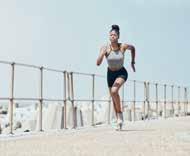


CHILD’S PROGRESS with formative assessment built into every lesson, clear guidance for making summative assessment judgments at the end of each module, and a straightforward system for tracking children’s progress.
ENSURE ALL PUPILS CAN SEE THEMSELVES REFLECTED IN SCIENCE LESSONS – all lessons and activities have been reviewed with representation and inclusion at the forefront.

with sustainability and environmentalism integrated throughout. Recent scientific developments and current scientists are also featured.
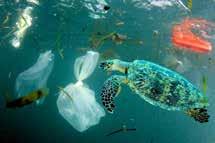

IMPROVE ALL TEACHERS’ CONFIDENCE TO TEACH SCIENCE when planning lessons with accessible, teacher subject knowledge in every module and CPD FOR SUBJECT LEADERS to use to share current research, ensuring a consistent approach to science teaching and learning across the whole school.
Snap Science offers a considered response to Ofsted’s recommendations in the Research Review Series (2022) and Subject Report (2023). High-quality practical science is at the heart of the programme. Progression in both disciplinary and substantive knowledge is planned for and assessed. Snap Science supports teachers to instil a belief in children that science is for everyone with opportunities throughout for pupils to develop their science capital.
Download a response on the implications for primary science from the Ofsted Finding the Optimum report.

Developed with in-depth formative and summative assessment at its core, Snap Science offers simple, yet robust tools for judging and recording whether a child is meeting National Curriculum expectations. Engaging formative assessment opportunities are built into every lesson plan, along with guidance to enable teachers to use what a child has said, written, made, or drawn in a lesson to confidently assess their learning. For every National Curriculum Statement, a Snapshot assessment activity will help you to check children’s understanding and develop their learning.
Snapshot assessments are short, fun activities that a teacher or other adult can use with a child or small group of children. Each Snapshot has four elements:
1. The activity resources (images, cards, etc. that adults will need to prepare).
2. Instruction for the adult leading the activity.
3. Questions for adults to use to check and probe understanding.
4. Guidance for adults to assess that a child has achieved the National Curriculum statement.
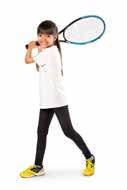
At the end of each Module summary, a table of summative descriptors guides teachers to use outcomes from the relevant lessons to make final judgments about whether children have met the National Curriculum expectations for conceptual knowledge and working scientifically.
These summative assessment judgments, whether children have met the learning expectations, should be entered into the Snap Assessment tracker. Teachers can make notes about all children, or just those judged not to be meeting expectations.
























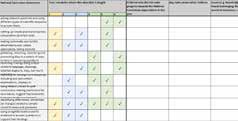
”Snap Science from Collins really is the complete package. Written by experienced, expert practitioners, it provides everything a school needs to meet its commitments to the science curriculum from Year 1 to Year 6.”
Mike Davies, Teach Primary Reviewer

Snap Science Foundation has been created for practitioners in EYFS settings to support them to develop young children’s scientific knowledge and skills through exploration of the world around them.
Natasha
Clemitshaw, Canon Popham CE Primary Academy

Each plan is accompanied by a slideshow of a short fictional story based on meaningful scientific context that leads to a problem or question for pupils to answer.
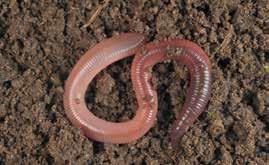
Snap Science Foundation contains 24 flexible activity plans. Each activity plan offers children the opportunity to raise scientific questions, to gather first-hand data to answer their questions and to start to use key scientific enquiry skills that they will continue to develop in KS1, KS2 and beyond.






Downloadable resource sheets and photo banks are also available for each plan enabling a stimulating and challenging programme of science activities.
Snap Science is a complete digital programme. For schools who would like the option, write-in Pupil Workbooks are now available for children to record their science activities and summarise their learning. The Pupil Workbooks:
• are matched to the 2nd edition of Snap Science
• support the activities and practical tasks from the Snap Science lesson plans to build scientific knowledge and skills
• assess and show evidence of learning
• record progress made throughout the year















































































Includes consolidation questions and scaffolds for practical work.
Includes the key information, knowledge and vocabulary taught in each lesson.
Choose three electrical appliances from the last page. Decide what type of electrical source each one needs to work. Write the name of the appliance in the correct column. Add two examples of your own.
Mains electricity Batteries
What is an appliance?
Batteries charged by mains electricity
What are the three main ways an electrical appliance can be made to work?

In this lesson I have learnt that: Many household appliances run on electricity Electrical are objects that need electricity to make them work – some plug in to the batteries
Make a list of five electrical appliances in your home. Find out if they require mains electricity, batteries or batteries charged from the mains to make them work.
Contact your rep for a demo or to arrange a free trial at findarep.collins.co.uk Alternatively, you can contact our friendly customer services team: Email: education@harpercollins.co.uk Tel: 01484 668148


subscription to
1-year subscription to
Science [2nd edition] Year 3
Science [2nd edition] Year 4
3-year subscription to Snap Science [2nd edition] Year 4
1-year subscription to Snap Science [2nd edition] Year 6 978-0-00-860724-1 £90 +
3-year subscription to Snap Science [2nd edition] Year 6